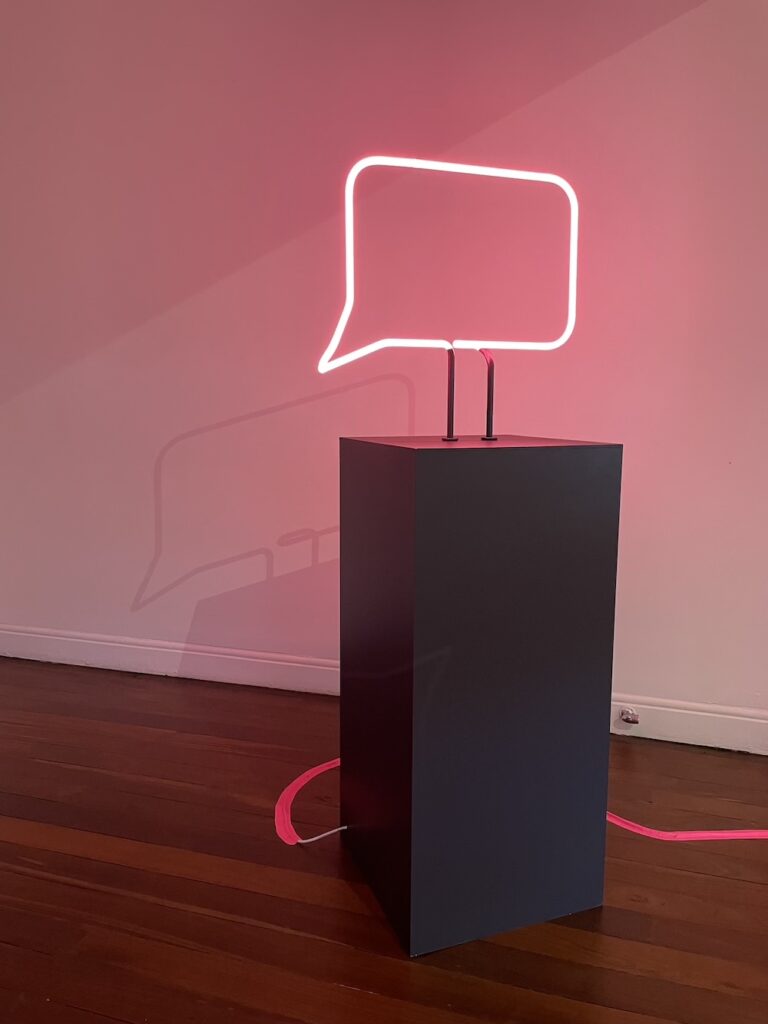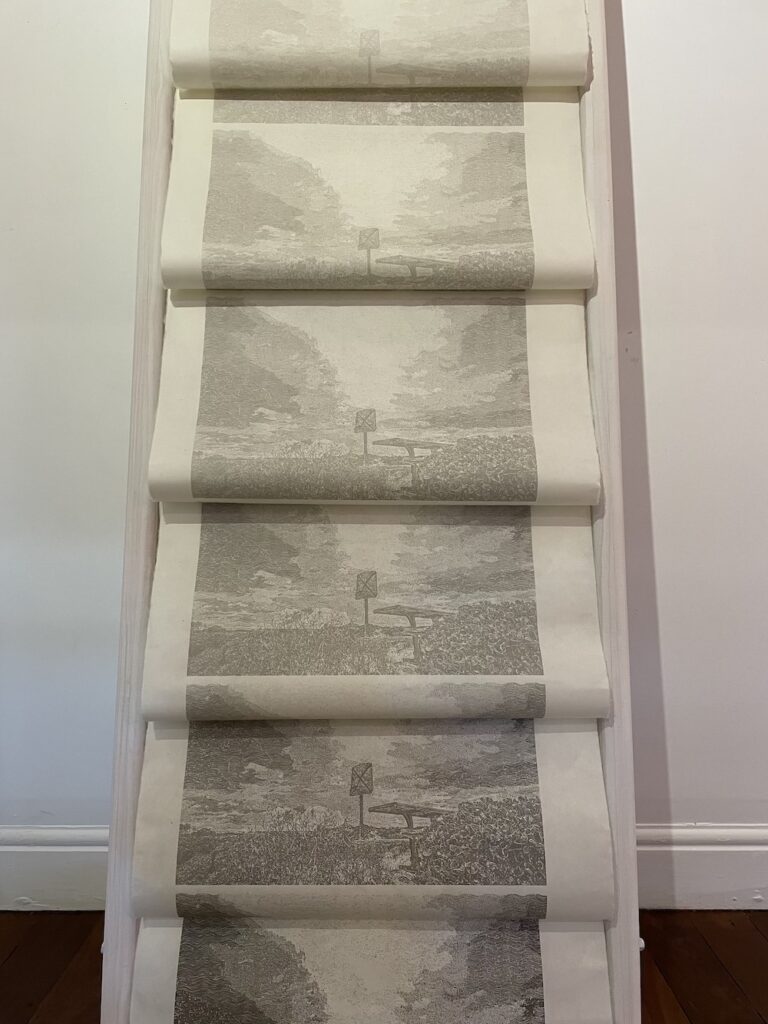Though bemused by its installation choices, Belinda Hermawan finds some thought-provoking art works in Tracing Absence, an exhibition that explores loss.
Finding presence in absence
19 April 2023
- Reading time • 6 minutesVisual Art
More like this
- Waves of influence span an ocean
- A walk with Tina Stefanou
- A blaze of glorious people
Tracing Absence, Robyn Bernadt, Natalie Blom, Chris de Sira, Shanti Gelmi, Louise Grimshaw and Laura Sikes
Kent Street Gallery, Victoria Park Centre for the Arts
Loss is a common human experience, but it can be hard to articulate.

Showcasing the multi-disciplinary artworks of a group of ECU alumni and friends, Tracing Absence is an exhibition that delves into the concept of loss and absence, and the ways we attempt to capture its presence, and interact with its physical reminders.
A literal highlight on opening night was Shanti Gelmi’s neon light installation Tip of the Tongue (2023), which comprises a hot pink speech bubble fixed above a black plinth. While the pink glow evokes a sense of intimacy and play, in omitting text, the attention-grabbing outline speaks to the idea that communication may ultimately be hollow – with nothing to say, no substance to what is said, or the significance of the message being what is left unsaid.
In Louise Grimshaw’s Remember a Friend (2023), a sketch drawing of an empty bench in an outdoor park is silk-printed in varying opacities and installed on a ladder-like frame. The resulting cascade is reminiscent of a fading print run, to the point where the paper at the top is blank. Is the friend’s absence being pushed down or transcended? It’s an interesting exploration of the reliability and permanence of such memories.
Robyn Bernadt cleverly gifts a sense of depth to the still photographs utilised in her paper works Black Box II (2022). The cut-outs are all images of people on a precipice – a cliff, bridge or mountain – and are each placed into the foreground of boxes featuring a pitch-black interior. More striking than a diorama, the effect emphasises that these figures can’t see beyond where they’re standing in this moment. The staggered height of the plinths also reminded me of how our experience of absence is not always uniform or linear.

While these three works shine on their own, the remaining works in the exhibition may have benefitted from more considered installation.
Viewing Chris de Sira’s site specific Memory Pattern #3 (2023) is much like stumbling into the corner of a stranger’s makeshift living room set-up, where small objects are strewn amongst bricks and plants are housed in random glassware. This assortment has the potential to make us curious about the story of the person who left this scene. However, without the inclusion of bolder elements, the work could be mistaken for bric-a-brac from an op-shop.
It is also too easy to miss Laura Sikes’ mixed-medium installation I forget my feet until I stub my toe (2023), thanks to its location in an inner corner near a doorframe. Audiences will need to look up to catch sight of the draped yellow fabric, and the lilac sandals casually askew on the floor may be mistaken for a patron’s. Once I was able to consider the work, however, I enjoyed the wistful, summery tone and the wonder it stirred about the whereabouts of owner of the shoes.
In Natalie Blom’s photographic works – Internet Searches for Ghosts series (2023) and This is now unknowable, still I try series (2023) – various flower motifs are presented to us as potential tattoo options for her, the subject. Though bright and flourishing, the works suffer both from an awkwardly spaced hallway install and a lack of overall clarity. The stylistic variance in motifs, combined with resolution issues, come across as inconsistent rather than deliberate.
Despite being inexplicably installed on a low plinth, the paper folding in Blom’s Similar but not quite (echoes in the void) (2023) is more successful; a fitting nod to the multi-faceted nature of memory.
Tighter curation was perhaps difficult to achieve in a collective venture among friends. The exhibition nonetheless offers an opportunity to ruminate on the urge to understand something or someone that isn’t present.
Pictured top: The paper folding in Natalie Blom’s ‘Similar but not quite (echoes in the void)’ (2023) is a fitting nod to the multi-faceted nature of memory.
Like what you're reading? Support Seesaw.





